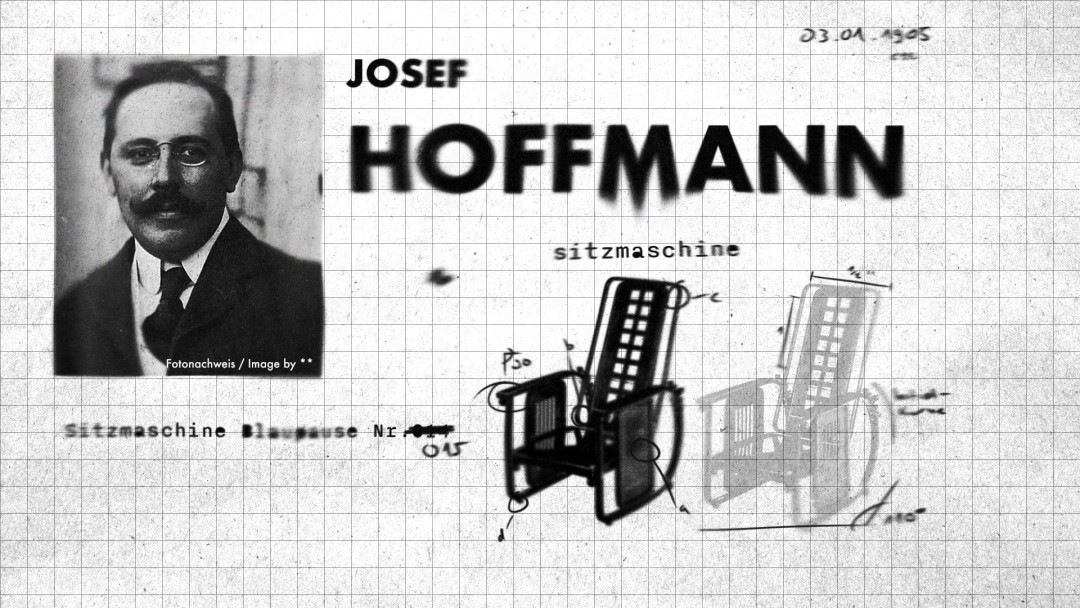 Vitra miniature of the Seating Machine
Vitra miniature of the Seating Machine Hoffmann came from a successful family. His father was mayor of his native town, and his family had a stake in the princely calico factory. Initially, he was supposed to become a lawyer. However, his interest and talent in technical matters prompted his parents to follow his wishes, whereupon he attended the State Trade School in Brno. After graduation, he worked at the Military Construction Office in Würzburg. He then studied at the Academy of Fine Arts in Vienna under Karl von Hasenberger and Otto Wagner.
Together with Joseph Maria Olbrich he founded the artists' association Wiener Secession in 1897. Josef Hoffmann lived in Italy for a year and was inspired by the cubic houses there. This influence can be found in his cubic leather armchair, the Kubus-Fauteuil of 1910. Josef Hoffmann was active as a lecturer for a long time. From 1899 to 1936, for example, he taught at the Vienna School of Arts and Crafts, where he took over the specialist classes for architecture in particular. From 1923 he was head of the workshop for enamel work and belting.
Most important works, Nazi period and later years
His designs for seating furniture include the Sitzmaschine of 1905, the Kabarett-Fledermaus chair of 1905 and the Siebenkugel chair of 1907/08. The originals of these chairs can be admired today in the Vitra Design Museum. Vitra sells miniatures of the seating machine today. Despite his unique seating furniture, Josef Hoffmann was primarily active as an architect.
One of his larger and well-known works was the sanatorium in Purkersdorf. His most famous building is the Stoclet Palais in Brussels, which was built by 1911 and has been a UNESCO World Heritage Site since 2009. His style gradually became more sober and at times was limited to functional buildings. During the Nazi era, Hoffmann was defamed as a "degenerative decorative artist." Nevertheless, they wanted to instrumentalize him. Hoffmann developed plans for the reconstruction of the Embassy Palace of the German Embassy, which took place from 1938 to 1945.
After the Second World War he took on various tasks. For example, he was the Austrian Commissioner General at the Venice Biennale. He was a member of the Austrian Art Senate. In 1950, together with Albert Paris von Gütersloh, he founded the Federation of Modern Visual Artists of Austria.
** Image: From author unknown - Stadtchronik Wien, Verlag Christian Brandstädter, p. 379, Public domain, https://commons.wikimedia.org/w/index.php?curid=709148

